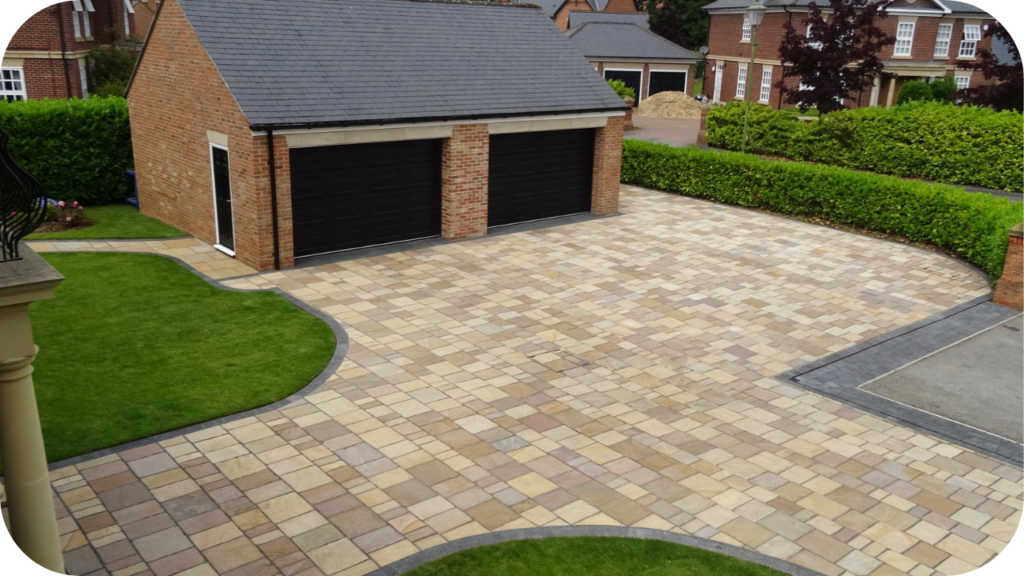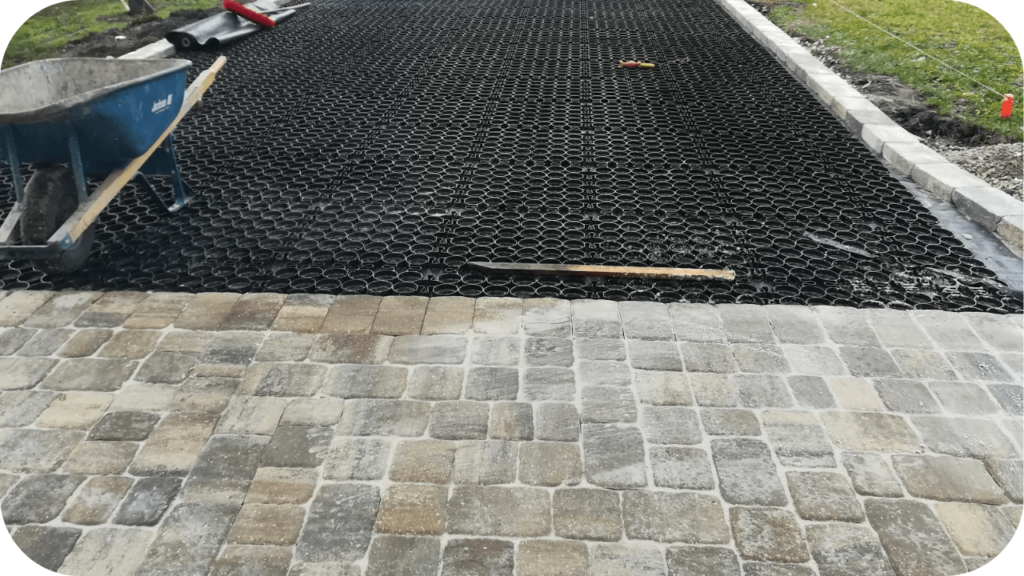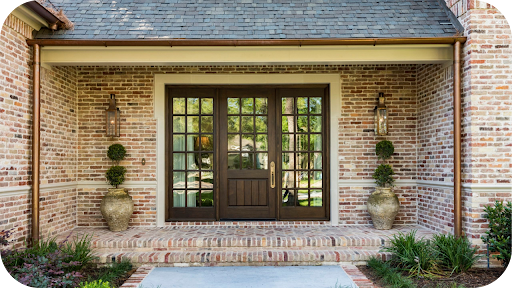What Are the Best Driveway Pavers for Australian Homes?
Selecting the right driveway pavers is one of the most important exterior decisions for Australian homes, especially with rising expectations for durability, appearance, and low-maintenance surfaces.
Every driveway faces constant sun, heat, rainfall, and vehicle load, which means your choice of stone has a direct impact on lifespan, safety, and long-term performance.
This guide breaks down what makes a driveway paver truly suitable for Australian conditions. It highlights the best natural stone options to consider for a strong, attractive, and long-lasting driveway.
What Are the Best Driveway Pavers for Australian Homes?
The best driveway pavers for Australian homes include Granite, Bluestone, and Porphyry for high strength and heavy traffic, while selected Limestone and Travertine suit lighter, low gradient driveways. Granite and bluestone offer strong stability, porphyry provides exceptional hardness, and cobblestones enhance durability on high-wear surfaces.
What Defines a Good Driveway Paver in Australia
Choosing the right driveway paver starts with understanding the conditions it must withstand in Australian homes. A driveway needs a strong load-bearing capacity to handle daily vehicle use without shifting or cracking, which is why stone thickness and density are essential considerations.
It also needs to perform well in Australia’s heat, rainfall, and changing temperatures, maintaining surface stability even during storms or long dry spells. A good driveway paver offers dependable grip in wet conditions and comes in colours that complement the surrounding streetscape while resisting fading over time.
Compatibility with different base systems also matters, ensuring the stone works seamlessly with compacted crushed rock foundations or permeable setups designed for adequate drainage.
Best Natural Stone Types for Driveway Paving
Selecting the strongest natural stones gives your driveway the resilience needed for daily vehicle use and changing weather conditions. These options highlight what performs best.
1. Granite Driveway Pavers
Granite provides exceptional density and load strength for high-traffic driveways. Varieties such as Charcoal Granite and Grey Granite offer strong stability, textured finishes, and reliable performance under heat, rainfall, and continuous vehicle pressure.
2. Bluestone Driveway Pavers
Bluestone delivers durable density and dependable weather performance for modern and classic driveways. Options such as Honed Bluestone and Bluestone Cobbles provide excellent grip, structural longevity, and the interlocking strength needed for driveways that handle daily vehicle movement.
3. Porphyry Driveway Pavers
Porphyry stands out for its high hardness and natural split texture, which enhances stability. Formats like Crazy Porphyry and Porphyry Cobbles create durable, interlocking surfaces that resist shifting and wear, making them ideal for long-lasting, visually rich driveways.
4. Limestone for Driveways
Limestone performs well on lighter traffic driveways when chosen in robust finishes. Varieties such as Loch Limestone and Brooklyn Limestone offer cooler tones, workable density, and appealing texture for flatter driveways with controlled load requirements.
5. Travertine for Light Driveway Use
Travertine suits low-load, low-gradient driveways where heat control is essential. Varieties like Silver Travertine and Ivory Travertine offer breathable structure and cooler surface feel, though they remain unsuitable for steep or high-pressure driveway conditions.
Driveway Layout and Design Options

Creating the right driveway layout can elevate both performance and street appeal. These design choices help you shape a driveway that feels balanced, durable, and visually refined.
1. Running Bond and Stretcher Bond Patterns
These classic linear patterns create a clean, structured look that suits most architectural styles. They distribute load effectively, work well with granite or bluestone, and provide a stable surface ideal for driveways in both modern and traditional homes.
2. Stack Bond for Contemporary Style
Stack bond layouts introduce a minimalist, symmetrical aesthetic. The grid-like arrangement works well with uniform stones such as sawn bluestone or granite, offering a crisp, architectural finish that enhances the strong geometric lines of newer Australian homes.
3. Crazy Paving for Organic Driveways
Crazy paving offers a relaxed, natural look with irregular stone pieces creating movement and character. Porphyry or limestone works well in this format, delivering durable visual texture while still supporting steady vehicle movement on flatter driveway designs.
4. Filetti Format for Narrow Linear Lines
Filetti paving uses long, slender stone strips to create striking linear driveways. Porphyry filetti is a leading choice for its strength and natural split texture, providing excellent interlocking stability and a bold visual effect along entryways.
5. Driveway Borders and Edge Restraints
Border detailing strengthens the outer structure and enhances appearance. Granite, bluestone, or cobblestones add clear definition and keep the driveway in place, helping prevent lateral movement while providing a refined finishing touch that ties the landscape together.
Key Factors to Consider Before Choosing Driveway Pavers
Choosing the right driveway paver depends on understanding how stone behaves under load, weather, and daily use. These essential factors guide you toward a surface that lasts.
1. Thickness and Stone Density
Adequate thickness and strong density help driveway pavers withstand continual vehicle pressure. Stones like granite or bluestone maintain structure, reduce cracking, and support long-term durability in varied Australian conditions, even with consistent daily movement.
2. Base Preparation and Subgrade Strength
A stable driveway requires proper excavation, strong subgrade support, and compacted crushed rock layers. This preparation prevents sinking, shifting, and uneven settlement, creating a reliable foundation that keeps natural stone driveway surfaces performing well for many years.
3. Drainage and Water Flow
Effective drainage prevents water from pooling and weakening the driveway base. Permeable systems, graded falls, and open joints maintain stability during heavy rainfall, protecting the foundation and keeping the stone surface secure throughout changing weather conditions.
4. Colour, Heat and UV Exposure
The colour of driveway pavers influences heat absorption and visual consistency. Lighter shades stay cooler, while UV-stable tones reduce fading and protect the stone from temperature-related stress in warm Australian climates.
5. Finishes and Surface Texture
A stone’s surface finish shapes comfort and confidence when driving or walking. Flamed, sawn, or naturally split textures offer dependable grip and create a visually appealing stone driveway suited to modern and classic Australian home styles.
Installation Requirements for Long-Lasting Driveways

Preparing a driveway correctly determines how well the stone performs under pressure, weather, and long-term use. These installation essentials keep your surface stable, durable, and reliable.
- Correct excavation and sub-base depth: Ensure adequate depth to support vehicle loads. Deep excavation with a strong base structure prevents shifting, strengthens the foundation, and keeps natural stone driveway surfaces stable for many years.
- Compacted crushed rock foundation: Use well-graded crushed rock compacted in layers to build a strong support system. This prevents sinking, effectively manages moisture, and keeps driveway pavers aligned under continuous vehicle movement.
- Bedding layers for stone stability: Apply an even, cushioning bedding layer that supports the pavers. This creates consistent levels, reduces stress points, and maintains a smooth, long-lasting driveway surface across changing conditions.
- Joint treatments that prevent movement: Fill joints with suitable materials that lock each paver into position. This minimises lateral movement, supports structural strength, and keeps the driveway firm through daily traffic and seasonal weather shifts.
- Edge restraints for long-term structure: Install durable edge restraints to keep the driveway from spreading outward. Strong borders maintain shape, enhance stability, and protect the stone surface from gradual displacement.
- Expansion and movement considerations: Include movement joints where necessary to allow the driveway to adjust naturally. This reduces cracking, eases thermal stress, and supports long-term driveway performance in Australian climates.
Maintenance Tips for Natural Stone Driveways
Regular care keeps your driveway looking sharp and performing well year-round. These simple habits help maintain strength, appearance, and long-term value.
- Clean seasonally: Wash the driveway, clear debris, and remove any marks. Regular cleaning prevents buildup, preserves colour quality, and keeps the stone surface looking fresh throughout changing weather conditions.
- Re-sand or regrout joints: Top up joints when they loosen or wash out. Maintaining joint material reduces movement, strengthens the structure, and helps each paver stay locked in place under vehicle pressure.
- Remove weeds and organic buildup: Clear unwanted growth before roots spread. Keeping joints free of weeds protects the driveway base, prevents lifting, and helps maintain a neat, low-maintenance outdoor surface.
- Reseal suitable stone types: Seal only stones that benefit from protection, such as certain limestone or travertine finishes. Proper sealing enhances durability, preserves appearance, and shields the surface from stains or moisture.
- Protect high traffic zones: Use mats, trays, or turning pads where tyres repeatedly pivot. Reducing harsh friction prevents scuffing, supports long-term surface quality, and keeps your driveway looking newer for longer.
Choose the Right Driveway Pavers for Your Home
Choosing the right driveway pavers creates a surface that looks refined, performs reliably, and withstands Australia’s challenging climate. Quality natural stone delivers long-lasting value, improving function and street appeal through its strength, texture, and visual character.
When you match the correct stone to your home’s style, conditions, and driveway layout, you build a surface that stays stable, attractive, and low-maintenance for many years.
If you want a driveway that feels premium and built for long-term performance, contact Splendour in Stone today and take the first step toward a beautifully finished home exterior.






